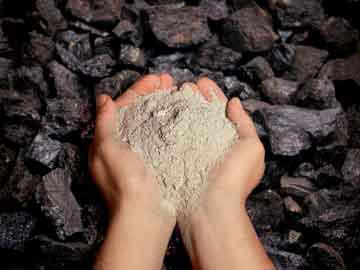Know More About Fly Ash for Good Storage
Fly ash is one kind of commonly used industrial powders, which is usually stored in fly ash silo. Flyer steel silo is a good choice for flyash's storage. Know more details about fly ash can help you achieve its good storage.
Microstructure of fly ash
The color of fly ash in appearance is similar to cement, which changes from milky white to black. The color of fly ash is an important indicator of its quality, which can reflect many its differences on carbon content and fineness in a certain extent. The darker fly ash is, the finer particle size is, the higher carbon content is. Fly ash can be divided into low calcium of fly ash and high calcium of fly ash. Usually the color of high calcium of fly ash is yellow, low calcium of fly ash is gray in color.

The fly ash particle has usually porous honeycomb structure with larger specific surface and high adsorption activity. The particle size is in the range of 0.5μm to300μm, whose bead wall has porous structure with 50% - 80% of high porosity and strong water absorption.
The microstructure of fly ash is mainly to study the particle shape, internal structure and phase characteristics.
Floating bead
Floating bead is usually milky white in color with less than 1g/cm3of density and 15μm and 180μm of diameter. It is a hollow ball with the glass phase, floating on water surface. Inside the glass phase are gas remnants. In molten state, due to the effect of surface tension, it can produce composite structure of small beads under contraction in the final process.
SiO2-Al2O3 glass bead
SiO2-Al2O3 glass bead is gray in color with1.8-2.7g/cm3of density and less than 50μm of diameter. It can sink to the bottom of water. SiO2-Al2O3 content usually accounts for above 80%. The bead formation occurs at the temperature of 1300℃-1400℃, the phase is mainly glass phase, mullite and a small scale of precipitation of quartz crystal. The content and crystallinity of mullite is higher than that of quartz crystal. If having a mild dissolution of bead, we can see its glass shell dissolving and clearly find the in-growth of acicular mullite crystal beads from the wall and a bigger bead also wrapped with smaller bead. We can also see that there is precipitation of mullite and quartz crystal on the wall of glass beads.
Irregular bead
When the temperature of particle of pulverized coal or boiler is lower than 1300℃, aluminum silicate clay minerals in pulverized coal can’t finish complete liquefaction, and then irregular bead is formed by solid-liquid phase of reaction and rapid cooling. Under the higher viscosity of liquid phase, the surface of formed aluminosilicate glass is very rough with a large number of micro-porous sponge irregular beads whose color is milky white and grey and small particle size. Irregular beads are consisted of high silicon and small amount of mullite.
Magnetic bead
Magnetic bead is black in color with the particle size of 50μm, the density of 3.8g-4.2g/cm3 and magnetic conductivity. The bead is formed by the contraction of the surface tension of the body and the high temperature and fast cooling of fly ash solution composed of rich iron. After the formation, the solution is easy to precipitation of crystal of magnetite, hematite mine and iron ore.
 Español
Español
